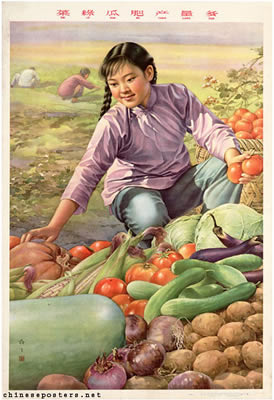

The Pack contains associated resources for the learning experience, typically in the form of articles and videos. There is a teacher Pack (with only teacher information) and a student Pack (which contains only student information). As a teacher, you can toggle between both to see everything.
Here are the teacher pack items for Communist China:


Overview In this experience, students contrast an idealized Communist propaganda poster from 1959 to photographs of the same period. Next they watch a video and summarize stages of modern Chinese history since the overthrow of imperial rule, and they learn about Maoism. Then they examine the Chinese economy and how changes in government structure helped it develop. Finally they research the modern history of Taiwan or Mongolia and explain its connection with China. Students will collaborate in small groups in scene 5. Objectives
Although China did not officially become a Communist state until the founding of the People’s Republic of China (PRC) in 1949, the process of the Communist takeover began with a series of revolutions following the abdication of the last Chinese emperor in 1912, and the founding of the Chinese Communist Party in 1921. In this experience you will learn about Communist China in the twentieth century.
Objectives
Take a look at this Chinese poster from 1959.

The characters on the top of this poster say: “The vegetables are green, the cucumbers plump, the yield is abundant.”
What impression does this poster give you?

Students might notice that the girl looks happy and healthy, there is plentiful food, there are lots of color, and so on. In other words, they will have a positive impression.
Now look at several actual photographs from China during the same time period.
How are these photos different from the poster? What do you think explains the difference?
Discuss student responses. Explain to them that the poster is a form of propaganda—information that is given to create a certain impression of something, either positive or negative. Discuss why someone would use propaganda like the poster when the reality is shown in the photos. Tell students that they will learn more about the context for the poster and the photos in the rest of this experience.
